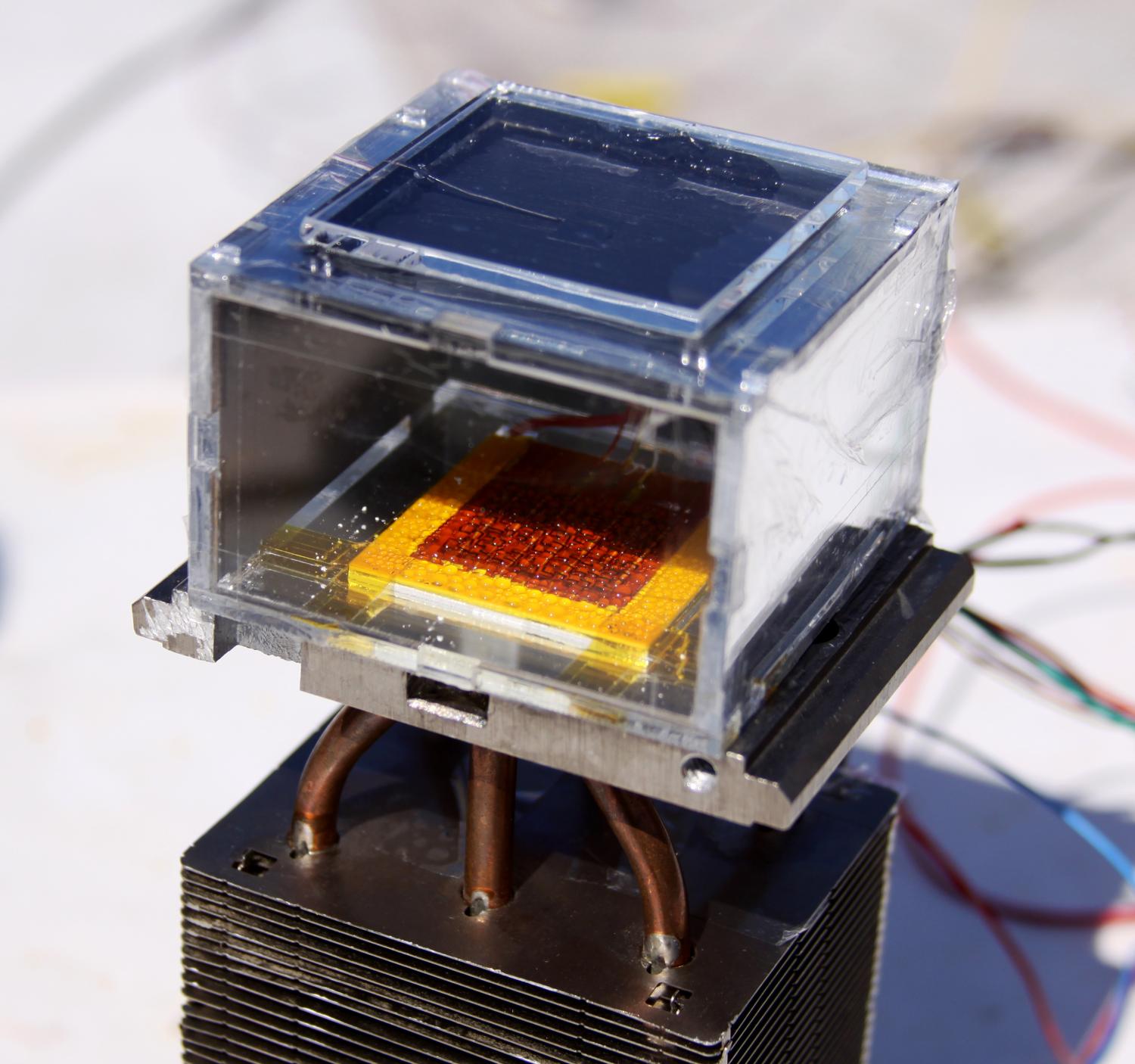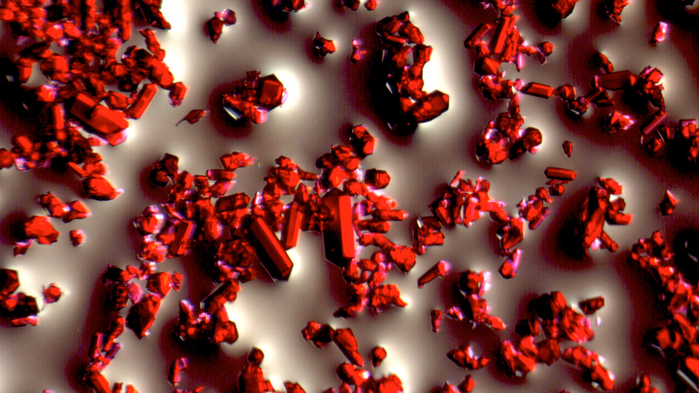The new solar system is able to extract water even from the dry air of the desert.

Experimental installation on the roof of MIT. MOF crystals are located under a transparent lid, the transparency of which allows the sun to warm them up and release the accumulated water. Yellow and red condenser covered with water drops located at the bottom of the installation
You will not be able to squeeze water out of the stone, but from the desert sky you can now, thanks to a new device that uses sunlight to extract water vapor from the air, even with extremely low humidity. The device can produce about 3 liters of water per day for every kilogram of sponge-shaped absorber it contains, and according to the researchers, future versions will be even better. This means that homes in the driest parts of the world may soon have a sun-powered device capable of producing all the water they need, benefiting billions of people.
13 trillion liters of water dissolved in the atmosphere is equivalent to 10% of all fresh water in lakes and rivers of our planet. Various methods of capturing atmospheric moisture, for example from fog, have been developed for a long time; various energy-intensive dryers — condensers — are also used. But both approaches require either very humid air or too much electricity.

MOF-porous crystals on the substrate
')
To find a one-stop solution, researchers led by Omar Yaghi, a chemist at the University of California at Berkeley, turned to a family of crystalline powders called metal organic frameworks or MOF. Yakhi received the first MOF-porous crystals that form continuous three-dimensional networks - more than 20 years ago. Networks form structures in the style of children’s assembling constructors of metal atoms, which act as hubs and rod-shaped organic compounds that connect the hubs together. By choosing different metals and organics, chemists can change the properties of each MOF, controlling the gases that bind to it, as well as the strength of the crystal itself.

Omar Yakhi, on the background of models of metal-organic porous crystal structures capable of collecting water from atmospheric air. Yaha’s discovery dates back to the mid-nineties of the last century.
Over the past 2 decades, chemists have synthesized more than 20,000 MOF, each of which has unique molecular trapping properties. For example, Yakhi and other researchers have recently developed MOF, which absorb and then release methane, being a kind of gas reservoirs that can be used in vehicles running on natural gas.
In 2014, Yahi and his colleagues synthesized MOF, which found excellent water absorption even in low humidity conditions. This led him to contact the Massachusetts Institute of Technology (MIT) mechanical engineer at Cambridge Evelyn Wang, with whom he had previously worked on a project on the use of MOF in automotive air conditioning. After synthesizing a new MOF based on zirconium, called MOF-801, Yakha met Wang at MIT with the suggestion: "Evelyn, we need to develop a new device for collecting water." And she gave her unchanged consent.

MOF schematic image. The red and black dots in the model are metal-organic structures held by black ligaments - the building blocks joined by Omar Yakhi into crystalline porous sponges using reticular chemical formation. Yellow balls represent pores capable of holding water molecules.
The system, created by Wang and her students, contains a kilogram, the size of a speck of dust, of MOF crystals placed on a thin, porous copper plate. This plate is placed between the solar absorber and the moisture condenser and is located inside the chamber. At night, the chamber opens, allowing the ambient air to penetrate the pores of the MOF, in turn, water molecules adhere to the internal structures of the crystal. Water, thus, is collected by peculiar molecular groups of eight pieces, forming cubic droplets. In the morning, the camera closes, sunlight penetrating through the upper window of the device, heats the MOF plate, which releases water droplets in the direction of the cooler-condenser by simple evaporation.

The temperature difference, as well as the high humidity inside the chamber, lead to condensation of steam into water, which flows into the collector. The installation works so well that it pulls out 2.8 liters of water from the air per day for every kilogram of MOF used, the Berkeley team and the MIT team reported today to Science.
According to materials of foreign popular Internet publishing houses
news.mit.edu newscenter.lbl.gov phys.org
Source: https://habr.com/ru/post/411043/
All Articles